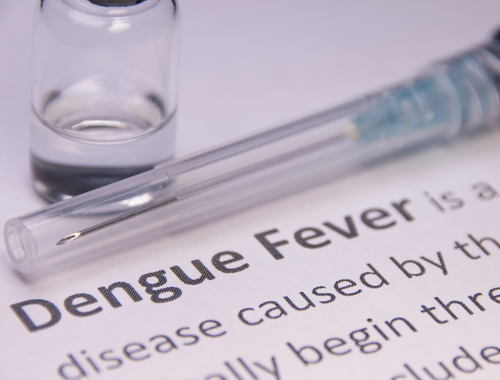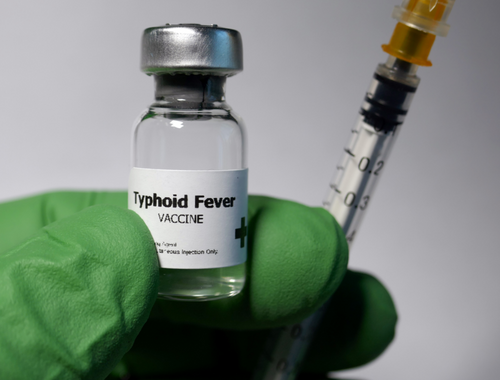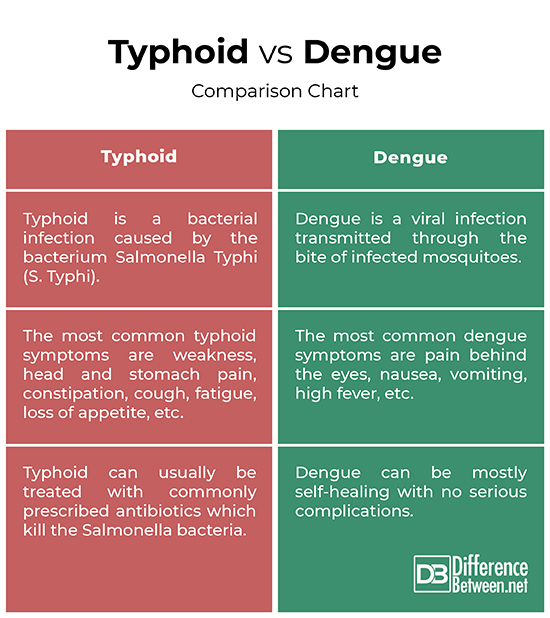Difference Between Typhoid and Dengue
Emerging and re-emerging diseases are a major concern in every corner of the world wherever you go. Popular growth and urbanization have a major role to play in this. Acute febrile illness (AFI) is one of the very common clinical presentations among both adults and children. Co-infections of dengue with typhoid are commonly reported but are difficult to diagnose. Particularly in many Asian countries, dengue and typhoid have emerged as major health concerns. If not diagnosed and treated at the early stage, both typhoid and dengue may lead to further undesired consequences.

Dengue
Dengue is a mosquito-borne tropical disease that commonly occurs in tropical and subtropical areas of the world. It is an infection spread by the bite of mosquitoes. Dengue is a fever that is transmitted to a person through a mosquito bite. An insect that can transmit a disease is called a vector. The infection primarily causes a self-limiting flu-like illness and may remain asymptomatic. The infection can further cause rashes, headaches, and pain throughout the body. Over the past three decades, there has been a dramatic rise in the frequency of dengue fever. Aedes aegypti and Aedes albopictus are the two types of mosquitoes that carry the dengue virus, both of which are found worldwide. Dengue is endemic in at least a hundred countries in Asia and the Pacific, the Americas, Africa, and the Caribbean.

Typhoid
Typhoid fever is a bacterial infection caused by the bacterium Salmonella Typhi (S. Typhi) through contaminated food and water. Typhoid mainly causes head and stomach pain. The patient’s temperature may reach 40 degrees Celsius. Other symptoms include constipation, cough, loss of appetite among others. Typhoid fever is diagnosed with examination of stool, urine, or blood cultures. It can be treated with antibiotics. People who drink contaminated water can develop typhoid fever. While no one knew when typhoid fever first appeared, Hippocrates described symptoms of a fever that is probably one of the first recorded descriptions of typhoid fever. The patients may become delirious and experience hallucinations. Permanent damage to the heart and blood vessels is also a common result. Typhoid fever remains a common health concern in undeveloped countries even today.
Difference between Typhoid and Dengue
Causes
– While both are notifiable diseases in Asian countries, particularly India, they are not the same. Dengue is a mosquito-borne viral infection which means it is transmitted through the bite of infected mosquitoes. Dengue fever is caused by the bite of an infected Aedes species. Two of the common species are Aedes aegypti and Aedes albopictus. Typhoid fever, on the other hand, is a bacterial infection caused by the bacterium Salmonella Typhi (S. Typhi) which infects your small intestines. Typhoid fever is contracted by the ingestion of contaminated water or water.
Symptoms
– Most dengue infections do not cause any visible symptoms. Mild symptoms of dengue can be confused with other infections that cause pains and aches, fever, or rashes. The most common dengue symptoms are pain behind the eyes, nausea, vomiting, high fever, etc. These symptoms start showing up to 10 days after a mosquito bite and can last up to a week. Typhoid fever mainly causes weakness, head and stomach pain. The patient’s temperature may reach 40 degrees Celsius. Other symptoms include constipation, cough, fatigue, loss of appetite among others. It starts with a fever that gradually increases each day.
Treatment
– While there is no particular treatment for dengue fever, patients who are contracted with the virus are advised to take adequate rest and drink plenty of fluids to stay hydrated. Some pain relievers can be taken for the pain. Besides that, dengue can be mostly self-healing. Typhoid fever, on the other hand, can usually be treated with commonly prescribed antibiotics which kill the Salmonella bacteria. It can usually be treated at home, but hospice care is required if it gets severe.
Typhoid vs. Dengue: Comparison Chart

Summary
Dengue is a viral infection caused by the dengue virus and is transmitted through the mosquito bite, whereas typhoid fever is a bacterial infection caused by a bacterium known as Salmonella typhi. This family of bacteria is named after Daniel E. Salmon, an American veterinarian, who first described the micro-organism in 1885. While there is no particular treatment for dengue fever, you are advised to drink plenty of fluids to stay hydrated. Typhoid fever, on the other hand, can usually be treated with commonly prescribed antibiotics to kill the bacterium. This bacteria is transmitted orally through contaminated water and food.
Is dengue and typhoid at the same time?
Co-infections of dengue with typhoid are commonly reported but are difficult to diagnose. But together, they may lead to further health concerns.
What are the symptoms of dengue malaria and typhoid?
Similar symptoms of dengue and malaria include high fever, nausea, and fatigue among others. Constipation is occasionally reported in dengue. Typhoid also has some overlapping symptoms such as fever, body pain, weakness, etc.
How is dengue and typhoid treated?
Typhoid can usually be treated with commonly prescribed antibiotics whereas dengue is mostly self-healing.
What is the platelet count in typhoid?
Platelet count gradually decreases in typhoid fever and also in viral infections like dengue fever.
What are the warning signs of dengue?
Warning signs of dengue include abdominal pain, vomiting, mucosal bleeding, bloody stool, liver enlargement, etc.
Can papaya cure typhoid?
Raw papaya can be consumed for a quick energy in typhoid fever because it is light and easy to digest.
Can urine test detect typhoid?
Typhoid fever can usually be diagnosed by analyzing samples of blood or urine.
Can CBC test detect typhoid?
Complete blood count (CBC) test will show an increase in the number of white blood cells (WBCs) which could be useful in the diagnosis of typhoid fever.
- Difference Between Caucus and Primary - June 18, 2024
- Difference Between PPO and POS - May 30, 2024
- Difference Between RFID and NFC - May 28, 2024
Search DifferenceBetween.net :
Leave a Response
References :
[0]Qureshi, Adnan I. and Omar Saeed. Dengue Virus Disease: From Origin to Outbreak. Massachusetts, United States: Academic Press, 2017. Print
[1]Miller, Petra. Dengue Fever. New York, United States: Cavendish Square Publishing, 2016. Print
[2]Adler, Richard and Elise Mara. Typhoid Fever: A History. North Carolina, United States: McFarland & Company, 2016. Print
[3]Emmeluth, Donald and I. Edward Alcamo. Typhoid Fever. New York, United States: Infobase Publishing, 2009. Print
